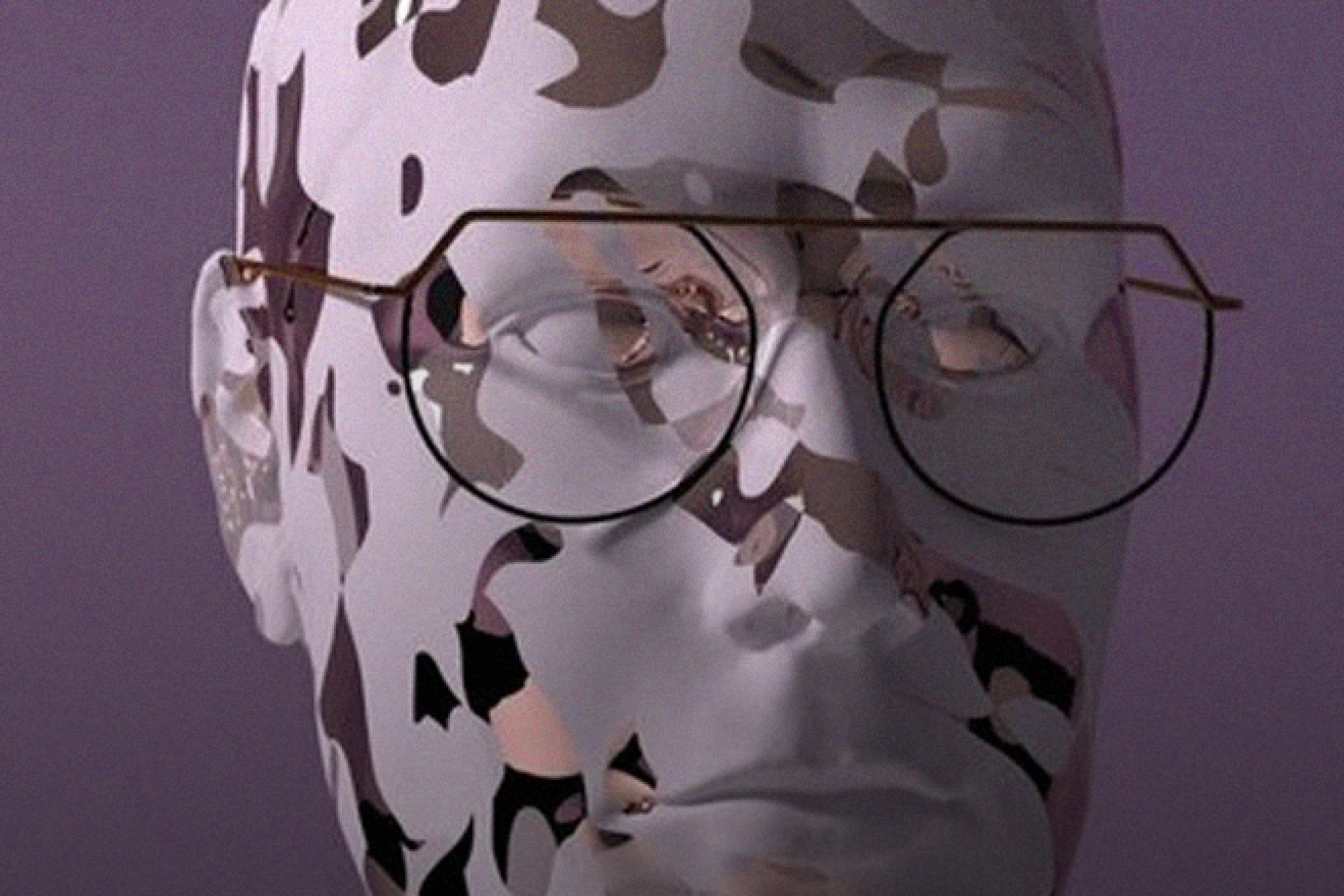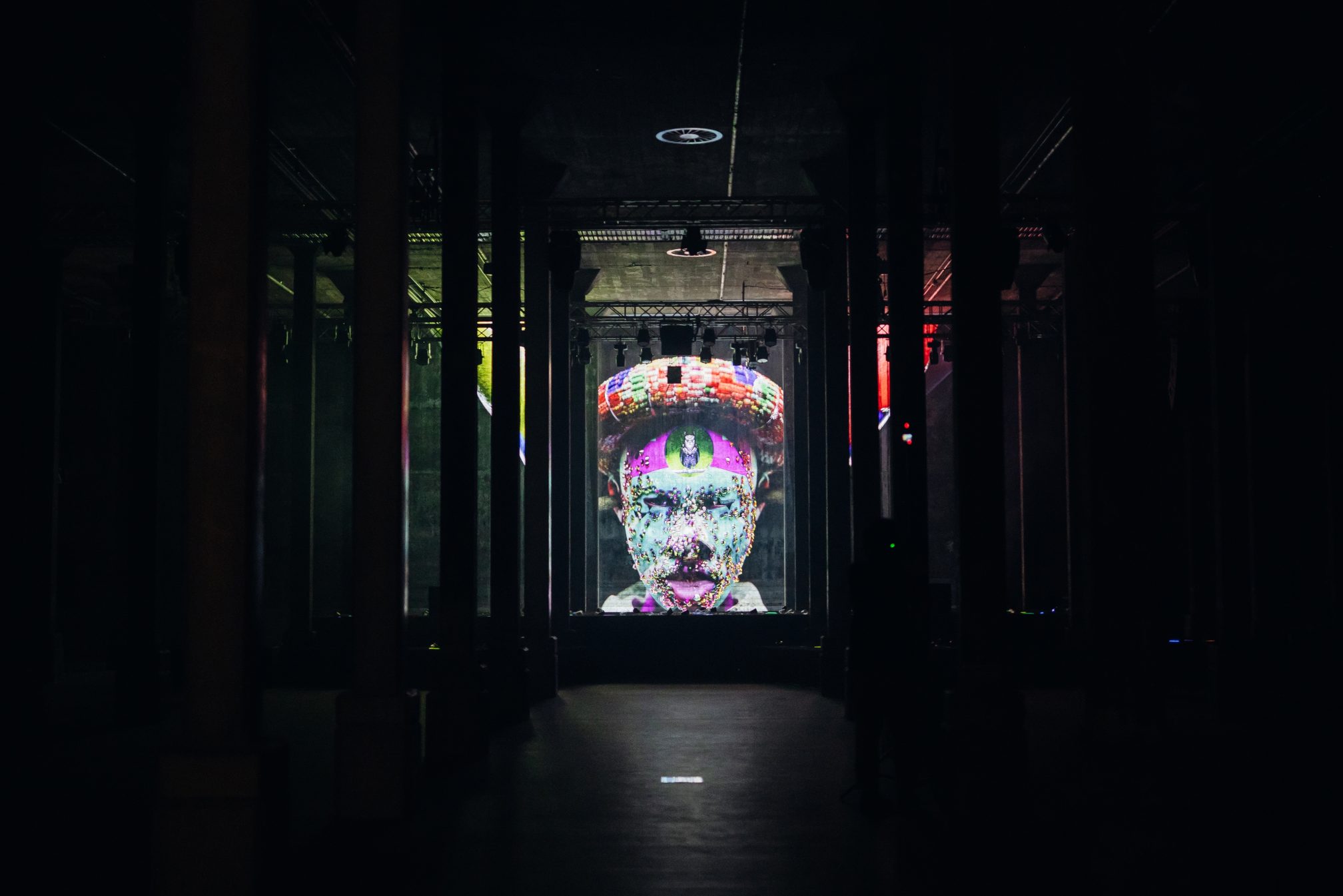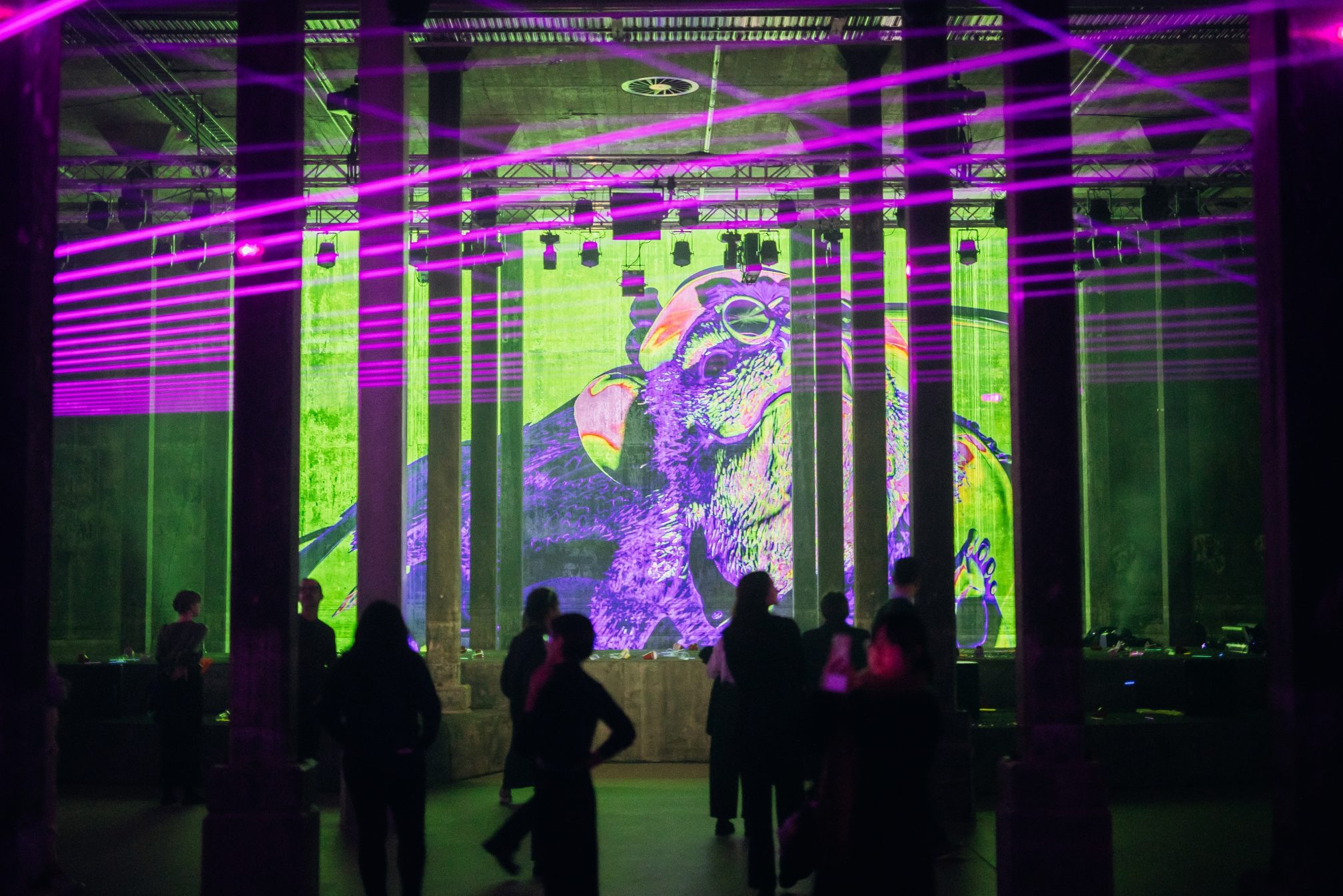 CULTURE
CULTURE
Designer Spotlight: Jonathan Zawada
Flume's longtime visual collaborator talks us through 'EDM', a collaborative piece by the pair on show at the Art Gallery of NSW.
Those of us thousands of kilometres away can’t be blamed for viewing moments like Berlin’s techno scene being inducted into UNESCO’s World Heritage list with disdain or a level of scrutiny.
Australia and New Zealand’s dance music scenes, while thriving in their own right, still exist at the peripherals of our larger more “notable” cultural exports.
Some artists and projects however have been so impactful and accessible that they’ve broken through all barriers, and immediately cemented themselves as part of our cultural zeitgeist.
Flume (he/him), real name Harley Streten, and his longtime visual collaborator Jonathan Zawada (he/him), are two such people. Flume’s 2016 album ‘Skin’, ARIA and Grammy winner, known for its groundbreaking organic identity by Zawada that would become all too familiarly mimicked in dance music as the years went on, was a defining moment for Australian electronic music in popular culture.
‘Every Dull Moment’ (EDM) is the latest collaborative project between the two. Bringing elements of their work into one of Australia’s most esteemed spaces, The Art Gallery of NSW, Zawada and Streten have once again blurred the boundaries between underground culture and ‘art’.
Ahead of EDM’s closing weekend, we spoke with Zawada about music as art, and the process of bringing such a piece to life for the art-loving masses.

HOW DID ‘EVERY DULL MOMENT’ COME TO BE?
It wasn’t specifically for Volume originally. Harley played me some music which he hasn’t released yet, which got me thinking about this idea of a deconstructed version of the live show, or a live version of what we do in the videos. I was vaguely thinking about some ideas that ended up being what we put together for Volume, but only in very loose terms.
It wasn’t really until Jonathan Wilson from the gallery directly invited me to be a part of it. Both Harley and I came down [to Sydney] for a day and had a proper tour of the space and chatted about some things that we thought could be exciting.
So, the very broad concept of a deconstructed EDM live show was there, but we actually had no mechanism for it. From there, Harley and I responded to the space itself, and Harley had some ideas that he was really excited about in particular.
-
WHAT WAS IT LIKE PUTTING THE PIECE TOGETHER FOR ‘THE TANK’?
It has such a strong identity of its own, and it was such an exciting part of the whole project, getting to engage in that space. It also came with its own complications and challenges though.
I may be wrong, but it’s something like an 11-second reverb in there. It’s always nice to have a challenge to work against or work through.
In thinking about this project though, I immediately felt like I had this sort of vague idea of this deconstructed live show, but also something that spoke to the history of electronic music in really broad terms.
A space like that just immediately feels like rave culture.
That kind of big space, a big disused industrial concrete environment, is exactly where a lot of this kind of music came out of. A lot of what the piece is about responds directly to that kind of clear aspect of electronic music, and so it was great having a canvas that already was bringing that to the piece.
We’ve done big live shows for Coachella and obviously Harley’s touring live show, but those shows are very stage focused and oriented in a single direction. I was really excited about the idea here that we could get back to something that was very prevalent in early rave culture, which is that there is no focal point. It’s just a room.

HOW HAS YOUR OWN EXPERIENCE OF EDM & FESTIVALS INFLUENCED THE DIRECTION OF THIS WORK?
We do the live shows and have been to enough of those festivals, but I personally don’t like them at all.
I don’t like being around crowds of people, so what I was excited about was this opportunity to make something where it’s all the stuff I love, which is the lighting, the lasers and the visceral material of an aesthetic experience, but without the stuff I don’t like.
From chatting to Harley, he often says this, but he’s never actually seen any of his live shows because he’s up there.
The piece is a snapshot of electronic musical culture that, for me, goes back to being a fan of electronic music since I was 15 or even 12 or something.
There’s baggage that I’ve carried and added to over the years that I felt excited about and brought to the piece. Not directly addressing, but resurfacing that kind of iconic imagery we associate with rave culture.
I used to draw covers for mixtapes that my much older brother would make. Techno mixtapes on cassette, and I’d draw something like Felix the Cat with two bombs for eyeballs or whatever.
Very classic rave culture.
-
HAVE YOU MADE ANY CHOICES TO MAKE THAT ‘EDM’ ENVIRONMENT MORE PALATABLE FOR THE GENERAL PUBLIC?
This is probably a bad thing to say, but I don't really think a lot about the audience ever.
Harley and I definitely agree, there’s just something innately beautiful about lasers.
It’s this weird thing that they’re just embedded, dragged off almost and put in this little box, which is EDM. But you take lasers out of that context, and it’s this elemental force of pure light that is somehow controlled and focused in this unbelievably unnatural way. It’s this totally raw thing that feels universal in a way.
I don’t think it needs to be attached to the cultural context and hopefully that’s clear in the piece.
Even when you’re just in a room with a bunch of people and you just turn lasers on, and you don’t pulse them and you don’t move them or do anything, everybody’s like “wow, this is incredible.”
I remember, Harley bought this laser from an online retailer a few years ago, and he brought it over to my house as I’m just surrounded by bush. We were just firing it off into the trees and our kids were going nuts, they loved it.
It’s sort of like playing an instrument, just creating this thing out of raw material.
But also, I recognise that [the general public] aren’t sitting at the back, surrounded by their friends, and experiencing this on a visceral level. The best of the art world is like that as well. You know, the most beautiful paintings don’t operate in a purely intellectual capacity. They operate on a really visceral level which is what, you know, of all the genres of music I feel that electronic music does best.
It’s very up front about being like “we’re just here to make you feel a thing.”
That said, all the elements and the material in there are nods to their uses within the culture, but at the same time stripped of that culture, they’re still viscerally enjoyable. I think that’s why you use lights and lasers in a rave or EDM festival, because they just draw out this basic human response, I suppose.
-
THE PIECE IS RANDOMISED, WITH CLIPS PLAYING IN A SEEMINGLY NONSENSE ORDER THE ENTIRETY OF THE TIME IT’S ON. WHAT WAS YOUR INSPIRATION FOR THAT STRUCTURE?
I was keen to make something that would work and function in a way where you could stay for quite a long time or just come in for a moment and get the same sort of experience.
I had this amazing Mini Disc from the late 90s by Guesscom, which is an Autechre side project with this other guy Russell Haswell. It was something like 99 little tracks, each of which was just a sound, like this Autechre-ish sound sample library.
The whole concept was that Mini Disc had gapless playback, which CD players didn’t, and so you could put it on shuffle and get this crazy different construction of music every time you listened to it. There were slow bits and brutal bits, and as a 16/17 year old it left such a huge impression on me.
Using that as a reference point had me wondering what it would be like to add in visuals. Like, what if that was a visual experience?
-
IF YOU COULD ASK YOUR AUDIENCE TO PREPARE FOR THE PIECE IN ANY WAY, WHAT WOULD YOU ASK?
I’d ask people to go in there with zero expectations and some patience.
I’ve noticed as people have gone in there that they’ve expected it to be a linear sequence, and depending on when you step into it and how long you choose to stay you may get more or less out of it.
Walk in, walk all the way in and move around the space as well. It shifts around you, and you can be looking in one direction and something could be happening behind you without you knowing, or even above you.
Finally, don’t be afraid. You walk in, and you walk down this hallway and you can sense it.
My eldest has a genetic deletion, and a bunch of different disabilities and things, and so as he was going down the hall I could tell that he had quite a lot of anticipation about what was going to happen. Once you get in you’re confronted with a whole lot of darkness, but once his eyes adjusted, he really mellowed out and didn’t want to leave.
He’s been back two or three times now, and he loves it.
-
‘Every Dull Moment’ is showing at Volume, taking place at the Art Gallery of NSW, running this week & ending July 21, 2024.
Jonathan Zawada is online & findable via his website & socials.
Jack Colquhoun is the Managing Editor of Mixmag ANZ, find him on Instagram.


